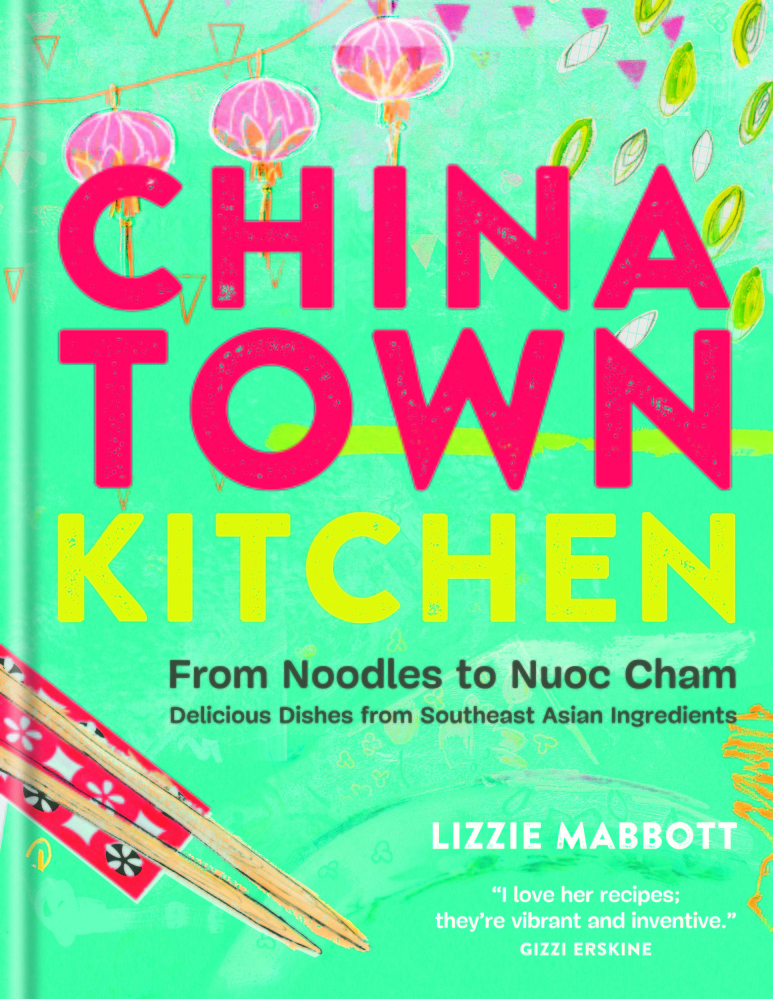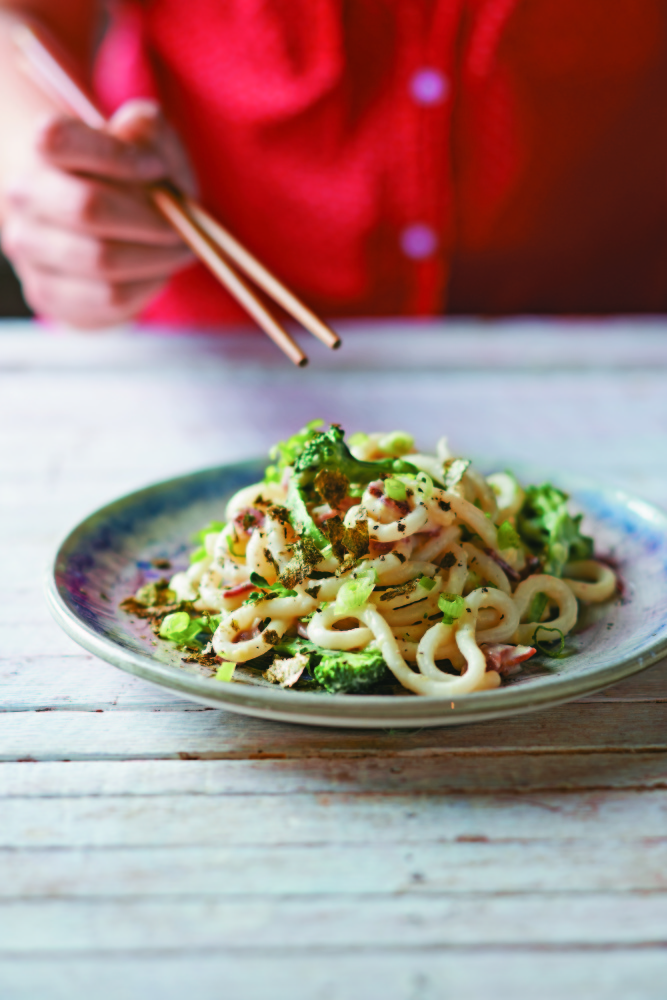From the perspective of someone who had a fairly ordinary, suburban American upbringing – in which dinner often featured one of several ways my mother could stretch a pound of hamburger to feed five – Lizzie Mabbott’s childhood was exotic.
Born in Hong Kong to a Chinese mother and English father who had moved to China “on a whim,” Mabbott ate spicy fishballs on sticks from street vendors for after-school snacks. On Sundays, her extended family gathered in restaurants for dim sum brunch, where her “elder aunties would choose a braised chicken’s foot from the steamer for their bowl, only to suck all the skin off the bones and then delicately but deliberately spit all the bones out onto the tablecloth, chopsticks sometimes guiding the way.”
Mabbott chronicles these memories in the introduction to her first cookbook, “Chinatown Kitchen,” the result of her efforts to cook what she never had the chance to learn from her Chinese grandmother, who discouraged children being in the kitchen. Mabbott’s family moved to the United Kingdom when she was 13; over time, she realized how much she missed the dishes of her childhood. In 2008 she started a blog, “Hollow Legs,” her childhood nickname, to document her discoveries at Asian supermarkets and recipe research. She traveled to Thailand, Singapore and Malaysia, adding those flavors to her repertoire.
I was excited to bring “Chinatown Kitchen” home to show my husband, who grew up going to New York City’s Chinatown and has long talked about cooking more Asian dishes in our home kitchen. While the recipes are intriguing, one of the most useful elements of the book is the extensive descriptions of Asian ingredients; some, like miso and fish sauce, I already know and use, but many others I don’t.
We are fortunate to have Asian supermarkets in Portland (even the Forest Avenue Hannaford has an impressive Asian ingredient section). Mabbott suggests the cookbook can be a guide for those unfamiliar with Asian markets, and I fully intend to use it that way.
Given its modest size, “Chinatown Kitchen” is packed with detailed information, presented in a lively, fun style. Some of the recipes are thoroughly authentic, others are more of a mashup – Mabbot’s personal take on Asian dishes. She calls a recipe for buddae jjigae that includes Spam, baked beans, kimchi and hot dogs “the ultimate instant noodle pimp,” and a few pages later, offers a traditional recipe for the classic Thai soup tom yum goong.
Since I learned to make thoroughly authentic spaghetti carbonara in Rome, from a Roman, I was intrigued by Mabbott’s udon carbonara, “an enormous bastardization,” she writes.
But a very good one. With the addition of sprouted broccoli, garlic, scallions and crumbled toasted nori, it has umami in spades.
UDON CARBONARA
Serves 2
4 strips of bacon, chopped into small pieces
½ sheet of nori toasted in a 400 degree F. oven until crisp (I used a whole sheet)
1 small head of sprouting broccoli or any other dark leafy green
1 scallion
1 fat garlic clove
2 handfuls of shredded Parmesan cheese
2 free-range egg yolks
Two 7-ounce blocks of vacuum-packed or frozen udon (I bought a 16-ounce package and used most of it)
Freshly ground black pepper
Fry the bacon in a nonstick skillet over medium heat until most of the fat has rendered and the bacon is starting to get crisp. While the bacon is frying, crush the nori in your hands into a bowl so that it becomes large flakes/dust. Separate the broccoli into small florets, trimming away any tough parts. Separate the white part of the scallion and shred finely. Mince the green part and reserve for the garnish.
Crush the garlic, add to the bacon in the skillet, and fry gently on low heat for a couple of minutes. Add the whites of the scallion, then immediately remove from the heat.
Whisk the Parmesan with the egg yolks in a large bowl. Bring a saucepan of water to a boil and cook the broccoli or leafy greens for 1 minute, then add the udon and cook following the package instructions (usually about 3 minutes, or until the blocks have loosened and untangled). Reserve ¼ cup of the cooking water, then drain the noodles well and add to the egg and cheese mixture.
Add the bacon mixture and toss well with the reserved cooking water. The egg and Parmesan mixture will emulsify into a sauce, coating the udon strands as you keep tossing. Garnish with the scallion greens, toasted nori and plenty of black pepper. Serve immediately on warmed plates.
Send questions/comments to the editors.




Comments are no longer available on this story